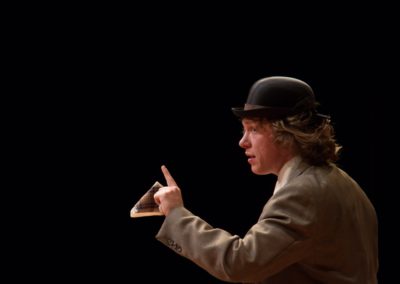Waiting for Godot by Samuel Beckett
Queensland University of TechnologyDirector's Program Notes
Beckett is believed to have been inspired to write Waiting for Godot after reading the Third Canto of Dante’s L’Inferno. Whether or not this is true, we can see similarities between Dante’s listless world of limbo where characters await their fate of salvation or hell and the empty wasteland that Vladimir and Estragon inhabit—seemingly ad infinitum. Godot’s environment is barren, cold, destitute, forlorn, and with the exception of the iconic tree, seemingly lifeless. There is no sign of water, flora, fauna, animals, or other indicators of existence. Within this purgatorial desert, the play’s protagonists are trapped in an empty and meaningless existence as defined by the play’s signature action: Waiting.
Considered by theatre critics and scholars alike to be one of the most important plays of its generation, Godot is as simple as it is profound in its sublimity. Just as Didi and Gogo indefatigably pursue meaning and purpose in the “hope” of breaking the monotony of their daily lives, we too can identify with the paralysis of habit and “waiting.” To one degree or other, we all live in a world counterbalanced by expectations and uncertainty. For Beckett’s characters, this dialectic is played out in a dramatic tension constituted by hope and despair. Both Dido and Gogo have different approaches to biding away the tortuous routine of eternity, but their clinging to hope in the face of hopelessness is what enables them to survive and can be seen as a timeless metaphor for the human condition.
Cast & Design Team
- Set Design:
- Jaimeson Gilders and Joshua Skipp
- Costume Design:
- Jaimeson Gilders
- Lighting Design:
- Liam Gilliland
- Sound Design:
- Yingying Yun
Cast: Hugo Kohne (Estragon), Tom Yaxley (Vladimir), Liam Soden (Lucky), Tom Filer (Pozzo), Michael Spicer (A Boy)










